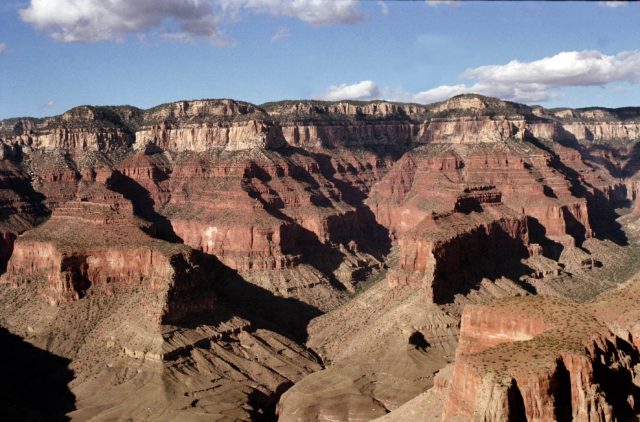
It might be one of the best studied geologic features in the country, and it's certainly one of the most striking, but a scientific debate continues to rage over the Grand Canyon. Specifically over what's typically considered an impolite question: how old is it?
Many geologists estimate that the Colorado River began to carve the canyon we see today between five and six million years ago. But in December, a paper published in Science presented evidence that the western portion of the canyon might have been carved close to the present depth by 70 million years ago.
This week, Science hosts two comments challenging the ancient canyon proposal and a defense of the controversial paper from its authors. This is science in action—researchers debating a 65 million year conflict between evidence from traditional geological methods and new dating technology.
It all started when Rebecca Flowers from the University of Colorado and Kenneth Farley from the California Institute of Technology decided to use a dating technique on the canyon floor that measures the radioactive decay in a specific mineral, apatite. The technique produces a record of when rock layers cooled because the helium that is produced by the decay of uranium and thorium can only diffuse out of the rock if the temperature is high enough. Measuring the trapped helium can provide insight on when a canyon was carved, because rock layers near the surface or exposed by the incision of a canyon will cool more quickly than those at depth.
This data suggests the western canyon was carved long before the Colorado River existed, perhaps by an ancient river that flowed eastward. The east and west sections of the canyon may have formed separately, only being threaded together in recent geologic time.
Nobody’s disputing that this technique provides informative dates, but Karl Karlstrom, a geologist at the University of New Mexico, and eleven co-authors write this week to suggest that Flowers and Farley misinterpreted their data. Using a western canyon apatite sample from another study, Karlstrom et al. present data that the cooling occurred closer to the 6 million year estimate.
In her rebuttal, Flowers points out that Karlstrom's group choose to base its analysis on one sample pulled from a set of three. Flowers and Farley run their own analysis on their critic’s data and conclude that it provides more support for their 70 million year estimate.
“I disagree that this one anomalous sample disproves the ancient canyon model,” Flowers said. “The fact is when you take a step back, most of the data in that dataset supports an ancient canyon model.”
Thermal dating evidence aside, the lack of really old sediments deposited in the alluvial fan at the mouth of the canyon casts doubt on the ancient canyon model. Ivo Lucchitta, a geologist at the University of Northern Arizona, presents this data in his comment. He describes missing evidence of the impact that an ancient canyon would have on other geological features. For example, there’s an alluvial fan that formed across the path where the ancient river that supposedly carved the Grand Canyon would have flowed. Lucchitta also writes that today’s Grand Canyon is too narrow and steep to have survived 70 million years of erosion.
No one disputes evidence of other ancient canyons across the region, and Karlstrom et al. write that it’s likely that as the Colorado River carved its modern path, it probably took advantage of segments of existing canyons. That said, whether or not dinosaurs could have gazed down into the same canyon we do today remains under substantial debate—even in geology, a 65 million year discrepancy is not within any margin of error.
Science, 2013. DOI: 10.1126/science.1234567, 10.1126/science.1234203, 10.1126/science.1233982 (About DOIs).
reader comments
34